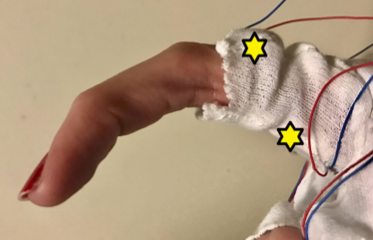
Passive Haptic Training to Improve Speed and Performance on a Keypad Article
Caitlyn Seim, Nick Doering, Yang Zhang, Wolfgang Stuerzlinger, Thad Starner
Abstract:
Learning text entry systems is challenging, yet necessary. Many layouts and keyboards exist, but they rely on laborious learning techniques. Passive haptic learning (PHL) has already demonstrated some benefit for learning the Braille text entry system. Could this computing-enabled technique be used to improve desktop keyboard typing skills? It is unknown whether passive haptic training can improve speed on a motor task (as opposed to initial learning). We use a randomized numeric keypad to examine users' typing performance with or without passive haptic training. When users were prevented from looking at the keyboard, the PHL group demonstrated consistent accuracy (-0.011 KSPC) while those in the control group greatly increased their error (+1.26 KSPC on average). This result is consistent with the finding that PHL users looked significantly less at the keyboard. In a second, longer study, users exposed to PHL were found to significantly improve their typing speed (mean increase of 11 WPM) versus control (mean increase of 2.2 WPM).
